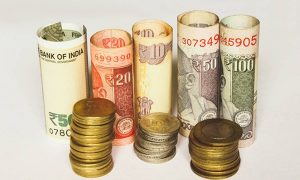Deepak Parekh, former chairman of Housing Development Finance Corporation, said on Friday that he’s “optimistic that the pace of financialisation of savings will increase”. In his keynote address at Franklin Templeton’s ‘Perspectives 2023’ event, Parekh said “financial savings have to grow if India has to grow”.
Read More: Cardless transactions: How to withdraw cash from an ATM without SBI, HDFC and ICICI debit cards
“While bank deposits still account for the largest share of household savings, what is encouraging is that household investments in mutual funds are showing increased traction. The AUM of the mutual fund industry has shown increased from Rs 8 lakh crore in 2013 to around Rs 47 lakh crore currently,” he said.
“A young working population with growing income, increasing financial inclusion, digitalisation of the economy and increased awareness about capital market products like mutual funds are likely to fuel financialisation even further. Despite global volatility, domestic investors have continued to have faith in the markets. Domestic equity flows have made our markets more resilient to volatility in foreign capital flows.
“For instance, last year foreign portfolio investors were net sellers and it was the domestic institutional investors that continued investing. This year, FPIs have come back to India in a strong way with year-to-date inflows at US$ 17 billion, while DIIs are at US$ 13 billion. The key point is that mutual funds help to counterbalance periods of FPI volatility and helps keep the Indian equity markets resilient,” Parekh added.
However, he said, a lot needs to be done in terms of growth in mutual fund customers.
“While there has been robust growth in the industry, we still have a long way to go. India has more than 50 crore PAN card holders and more than 11 crore demat accounts, of which over 6 crore have been just in the last 3 years alone. In contrast, the Indian mutual fund industry has only reached about 4 crore investors, which points to a disproportionate headroom for growth,” he said.
“Low financial penetration characterises most of India’s financial sector:
* Mortgage to GDP ratio is 11% in India, in China it is above 18%, in the US it is 52%
* Insurance penetration in India stands at 4.2% of GDP – against a global average is 7%
* Life insurance penetration in India is 3.2% and non-life is around 1%,” said Parekh.
Mutual fund distributors are the lifeblood of any asset management business. Mutual funds in India still strongly rely on the reach and strength of distributors who remain the vital link between the fund house and unit holders, said Parekh who stepped down from HDFC after the merger between HDFC and HDFC Bank.
India’s public digital infrastructure is an indigenous model which even developed countries want to emulate, he said.
“India’s digitalisation success is also attributed to its competitive cost of data. If one looks at countries across the spectrum, one gigabyte of data costs 0.17 dollar in India, compared to 0.41 dollar in China, 0.79 in UK and 5.6 dollars in the US. India’s public digital infrastructure is an indigenous model which even developed countries want to emulate. Global companies know they cannot afford not to have India as one of their key markets. I reiterate that this change has not happened overnight. It has been a gradual shift, but more importantly, this change has occurred on a very solid foundation,” added Parekh.
Read More: How To Spot Fake QR Codes And Avoid Getting Scammed
“The reforms envisaged a decade ago are reaping benefits today. The best example of this is the JAM Trinity. Today, we have 50 crore Jan Dhan Accounts, 1.4 billion Aadhaar cards and 1.14 billion mobile subscribers. What I am optimistic about is that the ongoing reform momentum continues, but the difference is that the reforms initiated today are likely to reap benefits for India at a much faster pace than ever seen before. India has literally been over the moon, aiming for the sun, forging critical alliances with countries, been host to G20 comprising over 85% of the world’s GDP and ranks amongst the top 5 countries in terms of stock market capitalisation,” he added.
However, Parekh said, India is not immune from the vagaries of the global macro-economic environment.
“The global environment today is one of increased turbulence, uncertainties and fragmentation. In the past three years, the world has seen a pandemic, an ongoing devastating war and increased urgency owing to the impact of a climate change crisis.
Read More: Petrol and diesel prices on September 16: Check latest rates in your city today
The external global landscape is one of weakening global growth and harder financial conditions, with major central banks continuing to battle inflation and consequently resorting to raising interest rates – which are likely to be higher for longer periods of time. The spillover impact is a rising cost-of-living crisis for a larger segment of the global population,” he said.





































